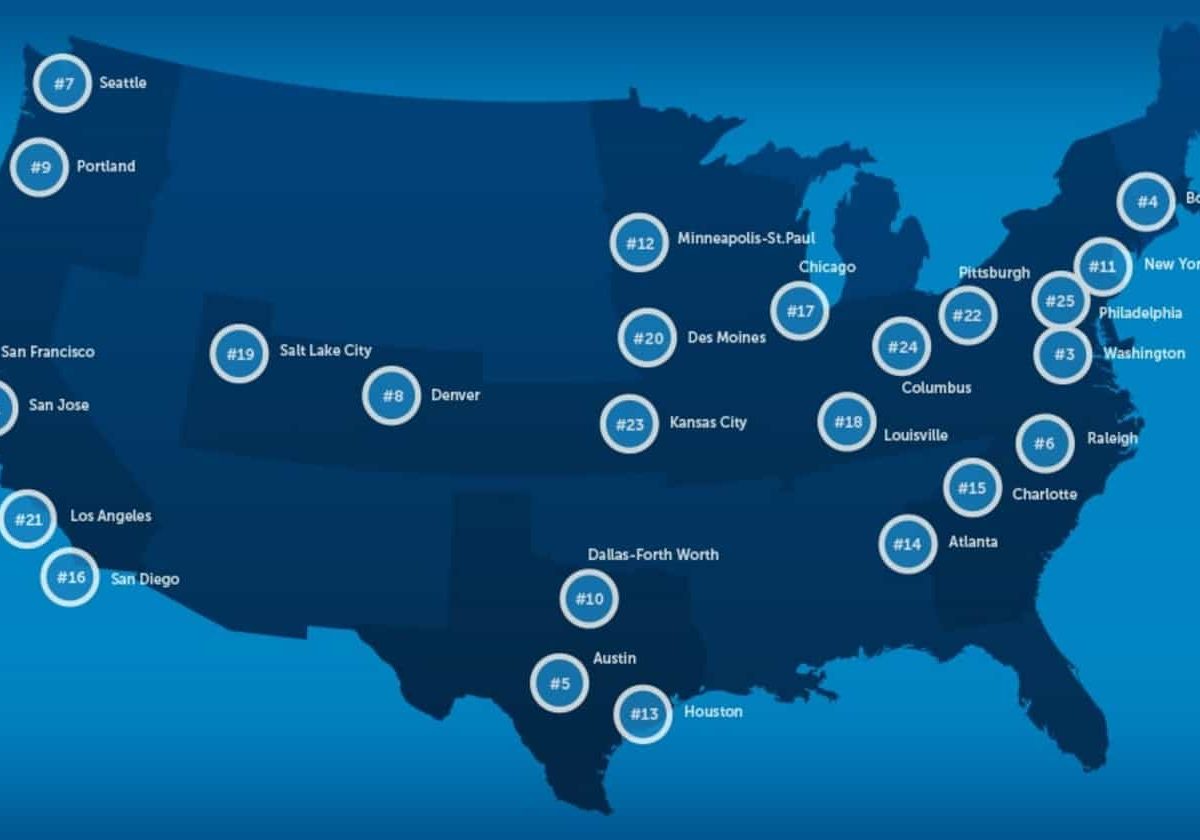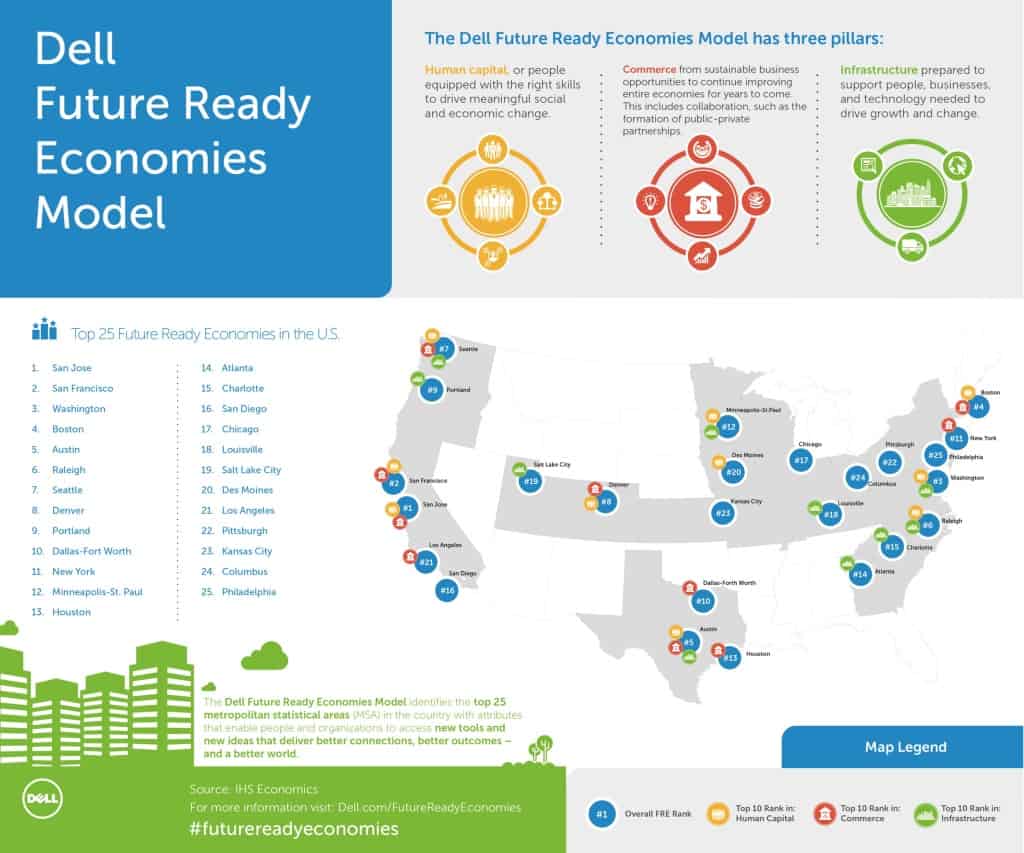

North Carolina — and especially its Research Triangle and Charlotte metropolitan area — regularly show up on those “best places” lists that flow from think-tanks, business-oriented magazines, and online listicles. On its website, the Research Triangle Regional Partnership helpfully has posted a rankings collection that runs so long I stopped clicking after 10 pages, 20-25 mentions per page.
A colleague at MDC, the venerable Durham-based nonprofit at which I am a senior fellow, called my attention to yet another list that had Raleigh and Charlotte near the top of “future-ready economies.” The rankings may or may not be superior to any others, but the accompanying analysis contained talking points relevant to educators and policy makers.
Dell, the Texas-based computer technology company, hosted what it called a “strategic innovation summit” at Harvard University in September and commissioned IHS Economics to use findings from the summit to develop a model for assessing how well metro areas and cities are “structured to optimal future readiness.”
In the overall rankings of top-25 U.S. regions, Raleigh placed sixth — behind San Jose, San Francisco, Washington DC, Boston, and Austin. Charlotte placed 15th, just behind Atlanta. In the “human capital” category, Raleigh placed third. In “infrastructure,” Raleigh placed second, Charlotte eighth. Neither Raleigh nor Charlotte ranked in the top 10 in the “commerce” category.


An overview paper defined the “human capital” component as evaluating whether a place has “people equipped with the right skills to drive meaningful social and economic change.” The study looked for “an infrastructure prepared to support people, businesses and technology needed to drive growth and change.” The commerce component focused on “sustainable business opportunities.”
“A key finding is the connection between education and technology, as well as other key indicators, in a future-ready economy that is enabling growth,” said the Dell overview. “…The rankings revealed no definitive formula for achieving future readiness, although one of the top predictors was education.”
Lessons from the summit, with participants including entrepreneurs, education professionals, and innovation officers of cities and corporations, are published in a white paper, which includes a chapter on education. Here are a few points made in that chapter:
- “Learning in an informal space is as important as learning in formal spaces,” and innovative cities provide informal learning opportunities.
- “There needs to be greater access to higher education, both financially and ease of entering college.”
- The country needs to share ideas and programs that are working, and “we need to tell stories better about what is working in education.”
- “Technology gives us very powerful levers to close equity gaps.”
If Raleigh and Charlotte are as “future-ready” as the Dell analysis suggests, it surely behooves state and local policy makers to keep them that way, and not weaken them with hasty, ill-considered shifts in policy. It has taken years, even decades, of both public and private investment to position North Carolina’s two largest cities among the “best places.”
In her demography blog, Rebecca Tippett of the Carolina Population Center looked at recent Census data on counties and reported that Mecklenburg County gained nearly 93,000 residents, and Wake more than 97,000 residents between 2010 and 2014. Both had half-decade growth rates of 10 percent, well above the average 4.7 percent growth among the 83 counties nationwide with a population of more than 750,000.
Despite their evident robustness, these two counties have challenging issues to face. For example, almost half the students in Charlotte-Mecklenburg County schools qualify for free or reduced-price lunch; in Wake County a third of the students.
In-migration of affluent people has been accompanied by in-migration of poor and near-poor people who search for and take jobs in the expanding retail and services sectors. As MDC’s most recent State of the South report pointed out, drawing on the Equality of Opportunity Project, Raleigh ranks 94th and Charlotte 98th among the largest U.S. metros in the chances for upward mobility for a child of low-income parents.
Perhaps more than ever, Raleigh and Charlotte form the hubs of metropolitan economic engines driving and shaping North Carolina’s future. Thus, the cities themselves need the wherewithal to remain “future-ready” economies and to lift more of their people into readiness for a fulfilling civic and economic life.
A footnote: The Dell-summit white paper devotes a page to the Hunt Library on the N.C. State University Centennial Campus as an example of “people-center infrastructure design.” Along with a dramatic photo of the high, sweeping atrium, the white paper says the Hunt Library “combines the draw of beauty and comfort with technology that most students and faculty would never have access to otherwise.”


